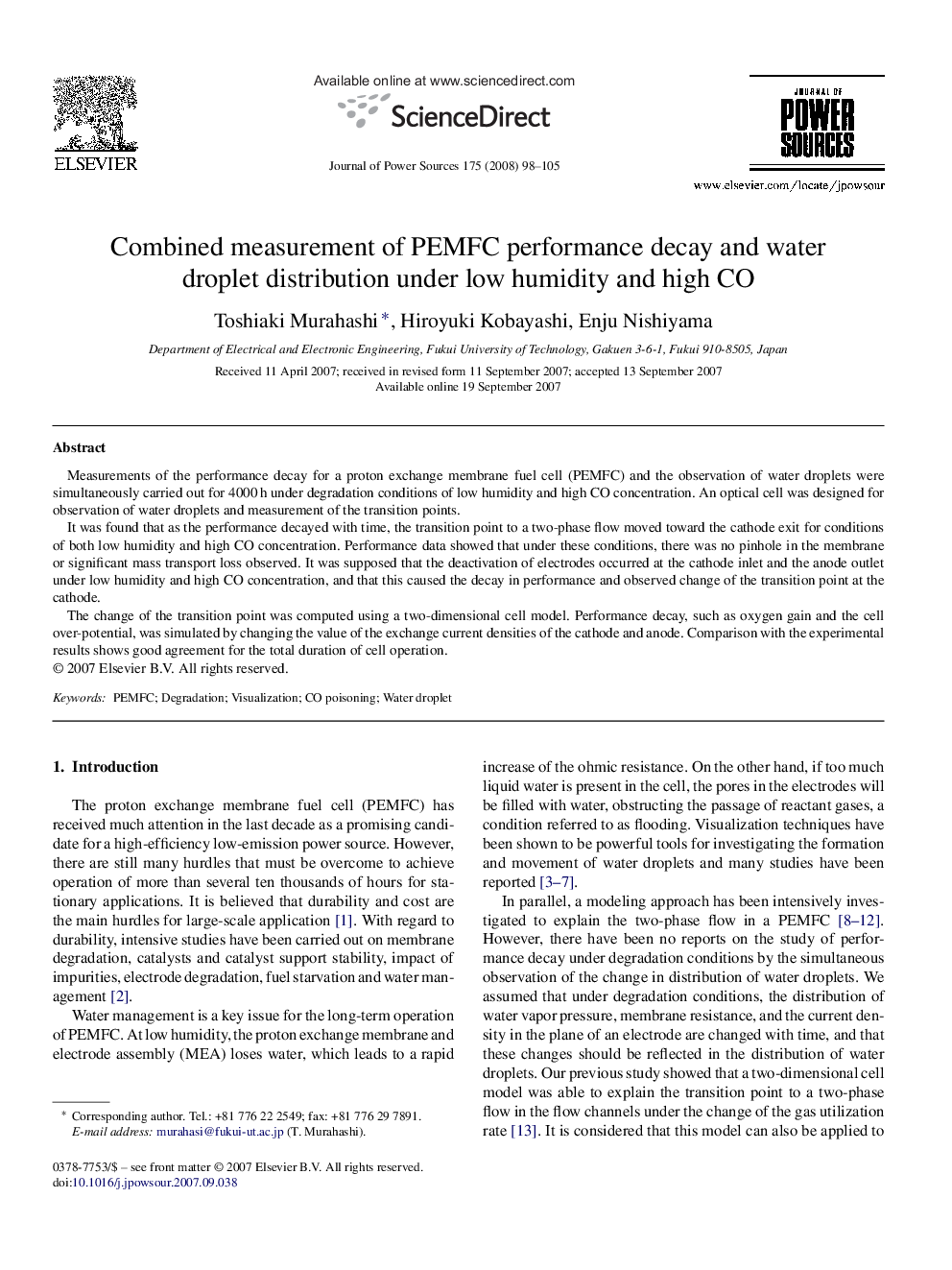| Article ID | Journal | Published Year | Pages | File Type |
|---|---|---|---|---|
| 1294756 | Journal of Power Sources | 2008 | 8 Pages |
Measurements of the performance decay for a proton exchange membrane fuel cell (PEMFC) and the observation of water droplets were simultaneously carried out for 4000 h under degradation conditions of low humidity and high CO concentration. An optical cell was designed for observation of water droplets and measurement of the transition points.It was found that as the performance decayed with time, the transition point to a two-phase flow moved toward the cathode exit for conditions of both low humidity and high CO concentration. Performance data showed that under these conditions, there was no pinhole in the membrane or significant mass transport loss observed. It was supposed that the deactivation of electrodes occurred at the cathode inlet and the anode outlet under low humidity and high CO concentration, and that this caused the decay in performance and observed change of the transition point at the cathode.The change of the transition point was computed using a two-dimensional cell model. Performance decay, such as oxygen gain and the cell over-potential, was simulated by changing the value of the exchange current densities of the cathode and anode. Comparison with the experimental results shows good agreement for the total duration of cell operation.
